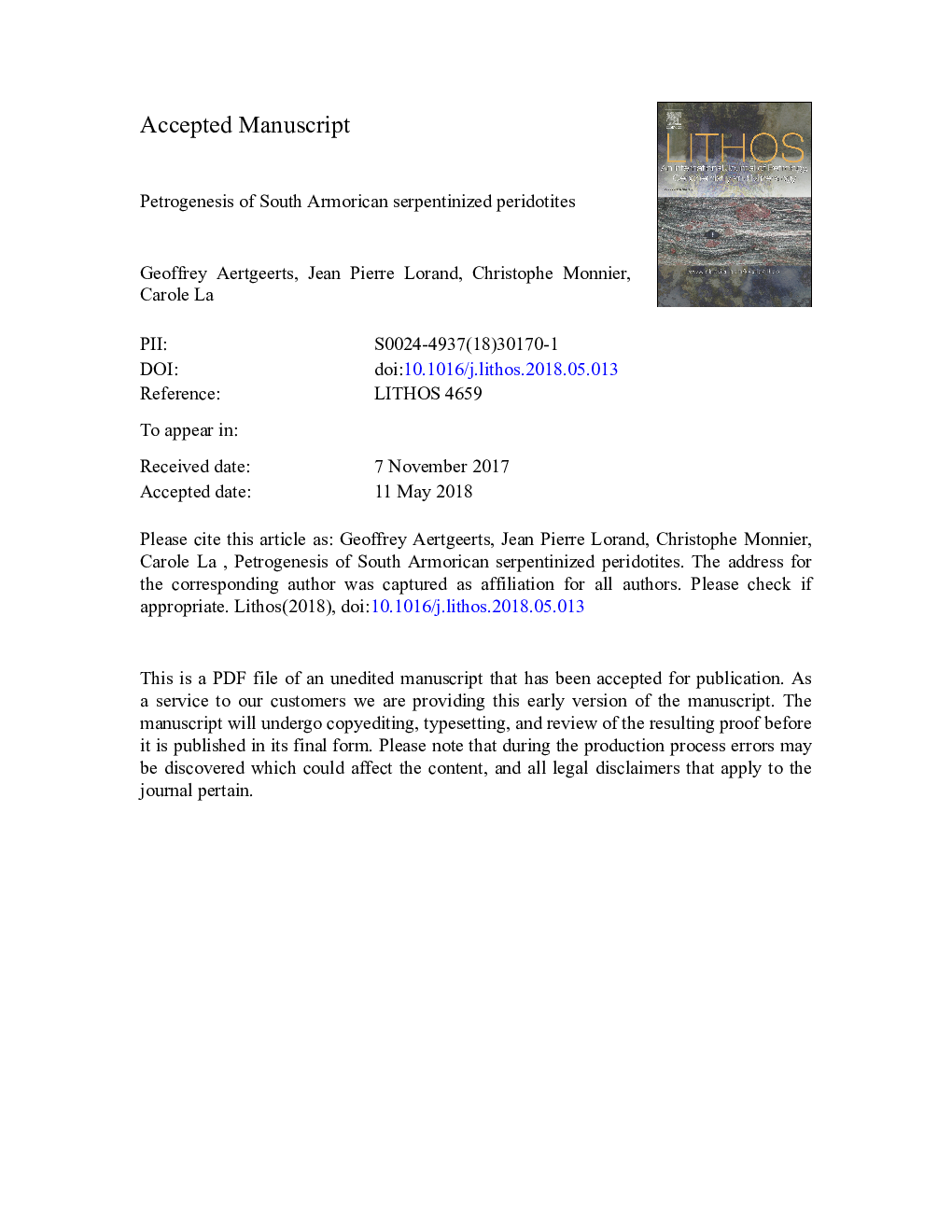| Article ID | Journal | Published Year | Pages | File Type |
|---|---|---|---|---|
| 8911542 | Lithos | 2018 | 63 Pages |
Abstract
Twenty three serpentinite samples collected from five outcrops in south Brittany (Audierne near Quimper, Champtoceaux near Nantes), western France, were studied using optical microscopy, electron microprobe (EMP), inductively-coupled optical emission spectroscopy (ICP-OES), inductively-coupled plasma mass spectrometry (ICP-MS), and laser ablation-inductively coupled plasma mass spectrometry (LA-ICPMS). Their bulk-rock major and trace element contents recomputed on an anhydrous basis are broadly characteristic of mantle-derived peridotites, as are the covariation trends of inert elements despite evidence of serpentinization-related remobilization of some fluid-mobile elements (FME; e.g., Ca, La, Ce, Sr, U). One outcrop near Champtoceaux shows fertile lherzolite compositions and chondrite-normalized rare earth element patterns consistent with low (5-7%) degree of mantle partial melting. The other four occurrences are harzburgites displaying higher partial melting degrees (15-25%). Regardless of their degree of fertility, our South Armorican peridotites bear evidence of high-temperature melt/fluid - rock metasomatic interaction yielding an overall enrichment in highly incompatible elements (HIE; Cs, Rb, Ba, Th, U, Pb, La). Hydrous modal metasomatism has been identified in both lherzolites and harzburgites. The lherzolites reacted with HIE-enriched small-volume fluids at Pâ¯=â¯1.5-2â¯Gpa for Tâ¯>â¯900â¯Â°C that produced a Ti-poor pargasite. The Audierne harzburgites were pervasively refertilized by alkali-rich hydrous melts that precipitated K- and Cr-rich pargasite. Taken as a whole, South Armorican peridotites record a great diversity of protoliths, from supra-subduction zone ophiolites (Audierne) to arc-fore arc provenance.
Related Topics
Physical Sciences and Engineering
Earth and Planetary Sciences
Geochemistry and Petrology
Authors
Geoffrey Aertgeerts, Jean Pierre Lorand, Christophe Monnier, Carole La,
